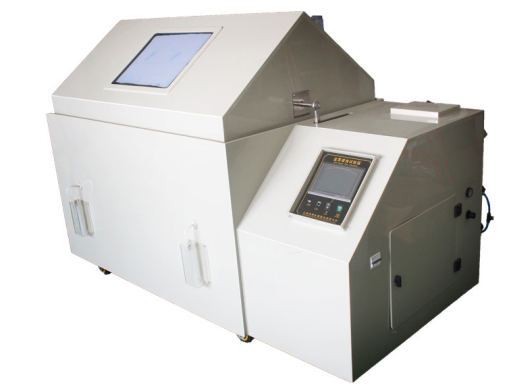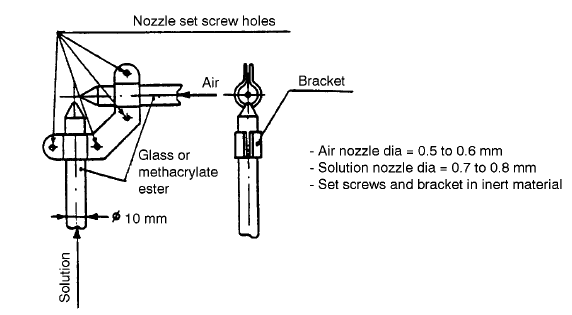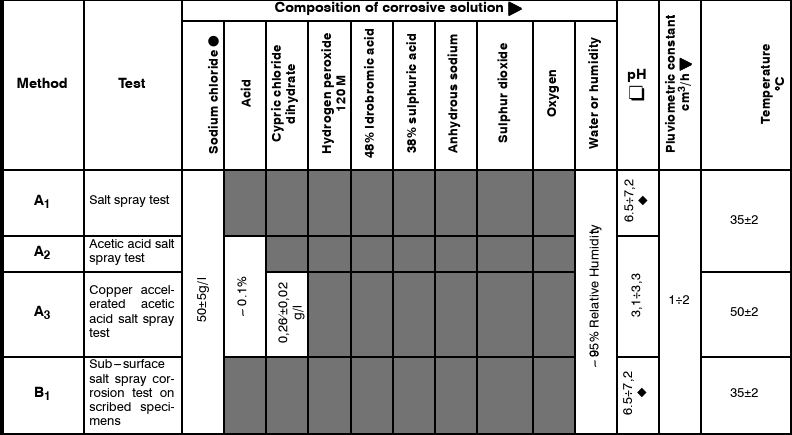Climatic chambers for Fiat 50180 corrosion tests
This standard covers procedures and equipment for corrosion testing, and specifies scope of the various tests. To create this corrosion environmental, you need a climatic chamber--salt spray test chamber. This standard covers procedure ( time, ambient and apparatus) for the following corrosion tests:
Method A1-Salt spray tests
Method A2-Acetic-salt spray tests
Method A3-Copper-accelerated acetic acid salt spray test
These standardized tests provide an accelerated means of simulating the effects of on-vehicle service in corrosive environments on materials, coatings,parts and components.
Method A1- For metallic materials and miscellaneous organic, inorganic, chemical and electrolytic coatings
Method A2- Preferable for inorganic chemical coatings and electrolytic coatings, which are only slightly reactive.
Method A3- For the same coatings as Method A2. This method has a corrosion speed approximately 5 times greater than that of Method A2.
In addition to the above specifications, selection of types of tests shall be based on exposure conditions of the material, coating, part or component during service as well as the chemical composition of corrosive agents with which it may come into contact.
These methods are based on the appearance, in a given time and under attack of corrosive agents, of marks or spots differing in colour or appearance from the surface being inspected.
On the basis of test conditions, environmental tests are classified according to severity level so that effects of differing intensity with respect to those encountered during service on vehicle may be simulated.
The severity level of each corrosion test will be a function of the following parameters:
-Degree of corrosiveness of agent selected;
-Duration of test.
Unless otherwise specified on relevant standards, the conditions laid down in the following paragraphs shall be adhered in establishing severity level for each test.
Duration of test ( with a tolerance of ±15min or ±1% according to the chosen exposure period) depend on the ageing period which is to be simulated, as well as on the corrosive effect of agent selected on sample being tested. In general, it shall be selected from the following:

Fog chamber preferably cubic, in which corrosive solution is atomised.

Of the latter, the aperture in the highest part of the chamber serves as an outlet for the salt fog and should therefore be connected to a tube in inert material leading to the outside of the building. The aperture at the base of the chamber is to drain drops of solution which accumulate through condensation on interior of chamber or which fall from specimens being tested.
The heater should be capable of reaching and maintaining chamber temperature. The heater shall be equipped with an adequately sensitive thermostat and shall ensure uniformity of temperature inside the chamber.
Air supply and conditioning system consisting of :
A source of compressed air at a pressure of 0.7 to 1.7 bar free from oil and from impurities ( after 1min, of spray there shall be no traces of oil or other impurities on a piece of filter paper placed at a distance of approx 20cm from the dry-type nozzle).
A pressure regulator valve, where compressed air pressure exceeds 1.7bar.
A humidifier to maintain the solution at the temperature in the chamber.
The humidifier shall allow air bubbles to pass through at least 30cm of distilled water at 55℃ to 60℃.
The resulting air shall have a temperature of above 35℃ ( 50℃ for Method A3) and relative humidity of approximately 95%.
The humidifier must be provided with a thermostat to stabilize the water temperature.
Atomizer constructed in inert material. Larger chambers can be provided with nozzles either proportionally larger or in greater number. Spray shall not strike specimens under test directly.

Thermometer, direct reading, to measure temperature in the chamber. The thermometer and sensor of the thermostat shall be adjacent; both shall be at least 10cm from the walls of the test chamber.
Consisting of a 100mm glass funnel ( collecting area of 80cm2) with the stem inserted through a rubber stopper into a 250cm3 graduated cylinder.

Should the collected liquid be more concentrated than the original solution, increase humidity by raising the water temperature in the humidifier or decreasing supply of air bubbles.
Unless otherwise specified the surface under test, shall be thoroughly degreased using solvent vapours and then be cleaned using a suitable detergent. After washing with water, the film of water on surface being tested shall not be broken.
In case of conversion layers which have been purposely impregnated with organic substances for protection, preparation of surfaces shall be as specified on drawing or related standard.
If specimens have been prepared from coated pieces, cut edges shall be covered with suitable adhesive tape so that corrosion propagating from edges does not interfere with results.
For more details, please feel free to contact sales@lenpure.com











